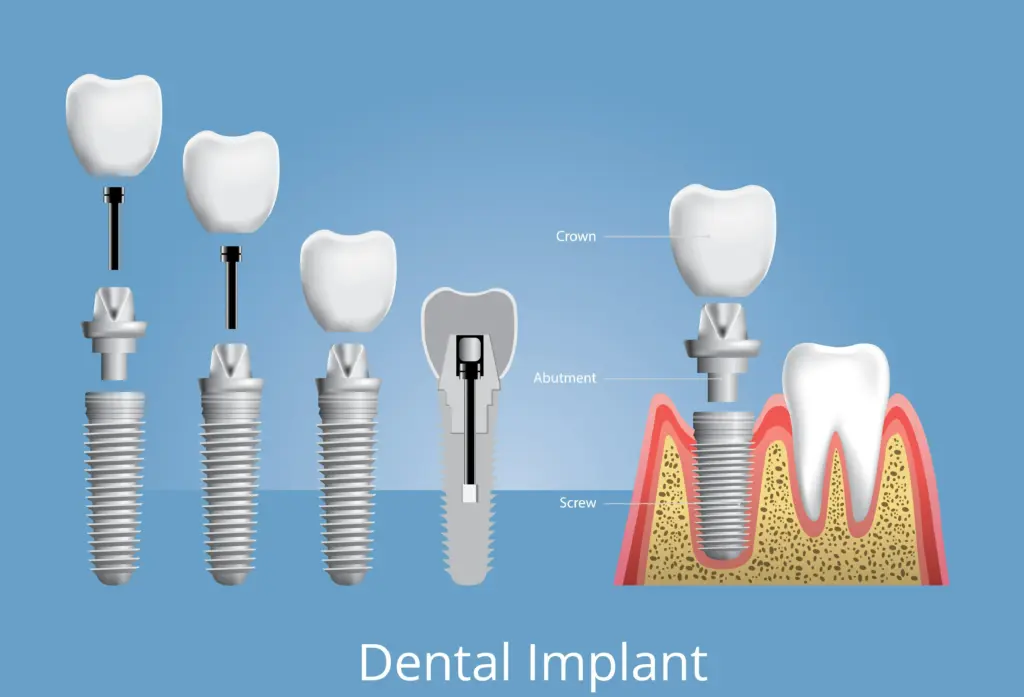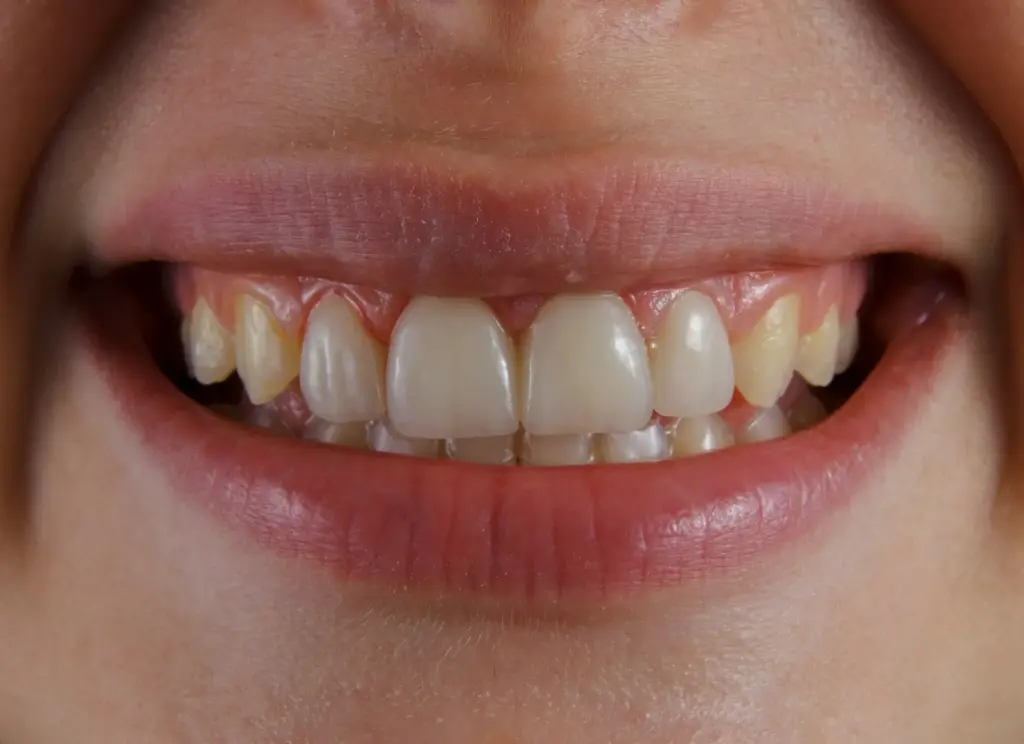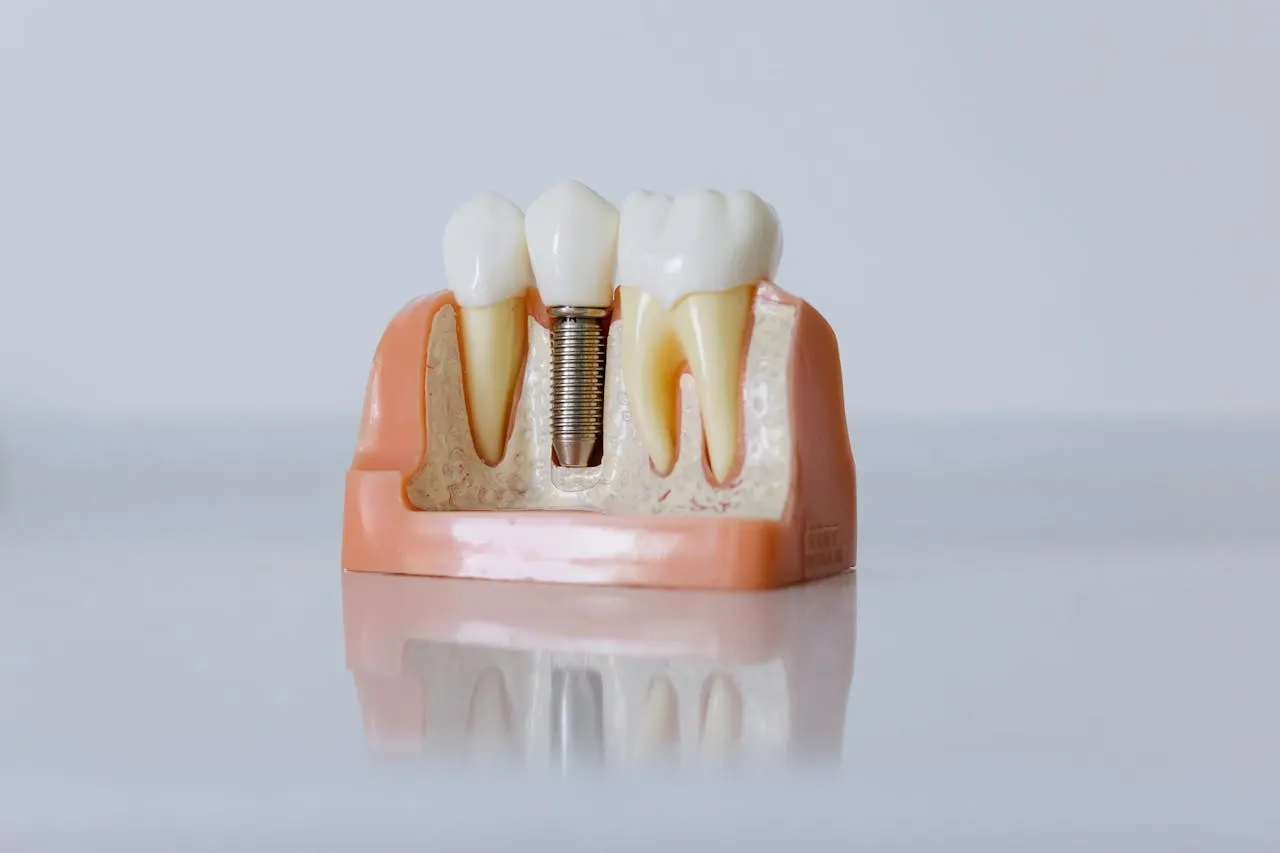Choosing a dental implant is a big decision. It restores your smile and chewing comfort, and it is sensible to understand the costs and what affects them before you commit.
Are dental implants available on the NHS?
In everyday circumstances, implants are not routinely available on the NHS. They may be offered in limited clinical scenarios, such as after certain cancers or major trauma. Most people, therefore, consider private treatment, where prices vary with case complexity, materials, and the practice’s expertise and location. For an official overview of dental procedures within NHS services, see the NHS guidance on dental treatments.
What influences the price?
Clinical complexity
- Bone volume and quality: Low bone may require bone grafting or a sinus lift, which adds materials, time and surgical skill.
- Gum health: Active periodontal disease must be stabilised before surgery.
- Tooth position and bite: Front tooth cases often need additional aesthetic planning to balance appearance and function.
Planning and technology

- 3D imaging, CBCT: This improves precision and risk assessment. Current European guidance sets out when CBCT is justified in implant planning. For background, see the evidence-based CBCT guidelines.
- Surgical guides and digital workflows: These add planning cost but increase accuracy.
- Provisional restorations: Temporary teeth during healing may be listed as separate items.
Materials and laboratory work
- Implant system: Reputable, well-supported systems and components cost more but aid long-term maintenance and future servicing.
- Crown or bridge material: Zirconia and high aesthetic ceramics are pricier than basic options and may be recommended for front teeth where translucency matters.
Number of implants versus teeth replaced
You do not always need one implant per missing tooth. For a three-tooth span, two implants with a three-unit bridge can reduce cost without compromising strength when planned correctly. If you are weighing options for adjoining gaps, this explainer on dental bridge vs implant is a helpful companion read.
What should be included in a quotation?
A clear, itemised plan helps you compare like for like.
- Consultation and diagnostics: clinical exam, photos, X-rays or CBCT, and digital scans to map bite and smile line.
- Treatment planning: discussion of options, risks and consent, with written timelines.
- Surgical phase: implant placement, extractions if required, grafting or sinus augmentation.
- Provisional phase: temporary tooth or teeth to maintain appearance and function during healing.
- Restorative phase: abutment and custom crown or bridge, including laboratory fees.
- Reviews and aftercare: healing checks, bite adjustments and home care coaching.
- Hygiene support: a professionally guided cleaning plan to protect the investment.
- Warranty and policies: component cover, exclusions and time limits.
What the day can feel like, and the weeks after
Every case is different, but a typical single-implant visit is often shorter than people imagine.
- During treatment, the area is numbed, so you should feel pressure and vibration rather than sharp pain. Patients often describe a firm push and the whirr of a handpiece, similar to having a filling, followed by a neat suture.
- Later that day, once the numbness wears off, there may be a bruised, tender feeling. Cool packs, over-the-counter pain relief and a soft supper, such as scrambled eggs or yoghurt, are usually enough for comfort.
- The first fortnight: mild swelling or colour changes in the gum are common. Saltwater rinses, careful brushing and avoiding the area when chewing help things settle.
- The longer view: after the bone has had time to integrate with the implant, the final crown is fitted. Many patients say the first proper bite into toast or an apple feels reassuringly solid.

Finance, insurance and the NHS
NHS position
Outside specific medical indications, implants are not routinely funded by the NHS. Alternatives such as bridges or dentures may be available within NHS bands. For a clear, patient-friendly explainer on how implants fit within NHS services, see Guy’s and St Thomas’ NHS Foundation Trust: dental implants.
Dental insurance
Many standard UK dental policies either exclude implants or limit payouts to certain situations, for example, accidental injury. Always request written confirmation of what is covered, waiting periods and caps.
Finance options
Some practices offer staged payments or 0% finance for a fixed period. If you are exploring affordability and terms, this primer on what dental financing is outlines common arrangements and sensible questions to ask.
Practical ways to keep costs sensible
- Stabilise gum health early: fewer complications and fewer extra appointments.
- Use implants strategically: a bridge on fewer implants can restore several teeth effectively.
- Time extractions and implants smartly: immediate or early placement can sometimes reduce visits, if clinically suitable.
- Choose durable materials once: quality ceramics and a precise fit reduce future repairs.
- Commit to maintenance: long-term supportive care helps implants last. For a concise clinician-written overview, see the British Dental Journal review of peri-implant maintenance.
Example scenarios to give the numbers context
A single back tooth is missing
Healthy bones and gums, no grafting required.
- Likely plan: one implant, one abutment, one crown.
- Budget expectation: towards the lower to mid range for a single implant.
Three teeth are missing in a row
Good bone, but a larger span to restore.
- Likely plan: two implants supporting a three-unit bridge.
- Budget expectation: lower overall than three separate single implants.
The full upper denture feels loose
Motivated for more stability and better chewing.
- Option A: implant retained overdenture on 2–4 implants, removable for cleaning.
- Option B: fixed full arch, All on 4 or All on 6, with a provisional bridge, then a final bridge.
Final thoughts
Headline fees are a helpful guide, but the right figure for your mouth depends on gum health, bone volume and the materials that will suit the job. The most reliable way to pin down cost, comfort and timeline is a calm, in-person assessment with proper imaging and a written plan.
Book your consultation and bring the checklist above so you can compare any quotes with confidence.

